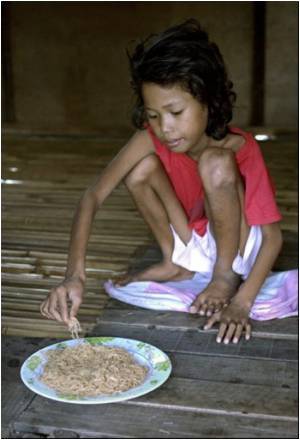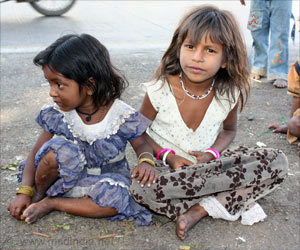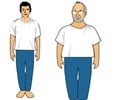
- Prevalence of underweight children under five years of age is a global problem resulting in negative health outcomes.
- Rwanda is a low-income, least developed country with significant threat of food insecurity.
- Rwanda is on track to reduce prevalence of underweight children under five years of age by 50%
Rwanda is one of few countries with a significant threat of food insecurity and is on a mission to reduce the prevalence of underweight children under five years old by 50 % from 1990 to 2015. This is the target of Millennium Development Goal (MDG1).
The 2010 Rwanda Demographic and Health Survey (RDHS) is a survey conducted nationally in 12, 540 households and is a representative sample of 13,671 women from the ages of 15 to 49 years, which includes information on children under the age of five years who were reported to be underweight.
Study
The DHS report gave detailed information on the percentage of children who was underweight but did not analyze the risk factors for the same. Hence a cross-sectional study was conducted based on the 2010 RDHS data on 4177 children under the age of five years to identify the risk factors and reduce the prevalence of underweight children in Rwanda.
- Children were categorized as being “underweight” if their weight-for-age was less than two standard deviations from the reference population.
- Children were classified as “severely underweight” if their weight-for-age Z scores (WAZs) was less than three standard deviations from the reference population.
- Children were classified as “wasted” if weight-for-height was less than two standard deviations from the reference population.
- Children were classified as “stunted” if height-for-age was less than two standard deviations from the reference population.
- Multivariable logistic regression model was used to identify child, maternal and household characteristics associated with being underweight.
- Assessment was also done to see if there was any relationship between the child’s birth size and current age on being underweight.
- In this analysis of the 2010 RDHS, it was seen that the prevalence of underweight children in Rwanda was low as compared to some neighboring countries like Burundi, Democratic Republic of Congo and Tanzania, but quite high as compared to some of the developed countries.
- Out of the 4177 children who were sampled, 469 of them (11%) were reported to be underweight and 90 of them (2.2%) were severely underweight.
- Gender and other
risk factors: It was also seen that male gender had an increased risk of
being underweight as compared to female (OR = 1.42, 95 % confidence interval (CI):1.12, 1.79).
Other risk factors of being underweight included fever in the two weeks prior to survey administration (OR = 1.45, 95 % CI:1.07, 1.97), being non-singletons compared to first-born singletons (OR = 4.04, 95 % CI:2.12, 7.71), recent deworming treatment, and being relatively small at birth. - Maternal
risk factors: Mothers of children who were underweight were found to have
following predominant characteristics:
- Greater than 35 years of age compared to those aged 17 to 24 years (OR = 1.67, 95 % CI:1.04, 2.70)
- No education or primary level education ((OR = 3.56, 95 % CI:1.83, 6.95; OR = 3.49, 95 % CI:1.87, 6.51, respectively) compared to secondary level education
- Have low body mass index (BMI) <18.5 compared to BMI between 18.5 to 24.9 (OR = 2.62, 95 % CI:1.70, 4.04)
- Have had their last child delivered by an unskilled provider (OR = 1.33, 95 % CI:1.04, 1.72).
- Household risk factors: Underweight children were found to live in households in one of the two lowest wealth quintiles compared to the highest two quintiles (OR = 1.71, 95 % CI: 1.27, 2.30)
- The study is a cross-sectional survey hence no causal conclusions could be made about the risk factors for children which could lead them to be underweight.
- The survey missed measuring some important factors including household food availability, which according to UNICEF is an important determinant of a child’s under-nutrition status.
- Being underweight cannot really show the extent to which a child is stunted or wasted even though underweight is a combination of both stunting and wasting.
- Risk factors associated with underweight status in children under five: an analysis of the 2010 Rwanda Demographic Health Survey (RDHS); BMC Nutrition Journal July 2016 - (https://bmcnutr.biomedcentral.com/articles/10.1186/s40795-016-0078-2)











